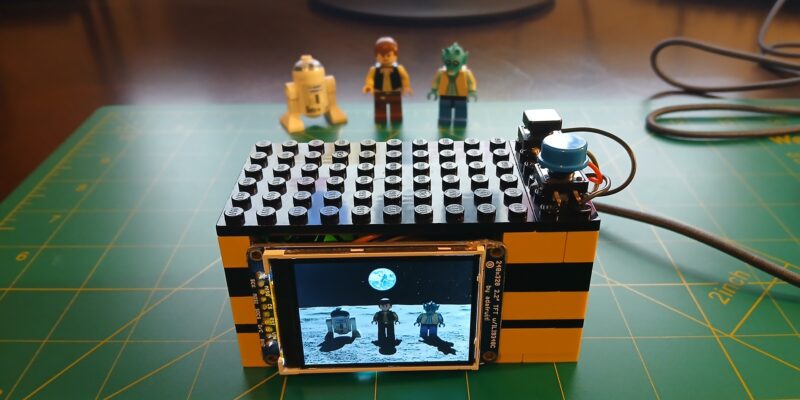Tenma 72-10480 power supply review
By Jo Hinchliffe. Posted
This article was originally published as part of HackSpace magazine, which has since been incorporated into Raspberry Pi Official Magazine.

This Tenma benchtop power supply has a variable voltage output up to 30 V DC and can supply up to 3 amps, which is a capable range in terms of average electronics circuit work, only excluding those working with high-current consuming devices, such as larger DC motors. It arrived well-packed and very quickly from CPC Farnell. Opening the box, we first noticed a European plug/lead and thought we might be off to a tricky start, but delving further into the box, we were relieved to see a UK lead as well.
Apart from the power leads, it’s supplied without any connecting cables. The output connections on the front of the unit – positive, negative, and earth – all accept standard 4 mm banana jacks, so many people will have some cables already. Indeed, we had a collection of various leads, including a pair terminated with some crocodile clips which were perfect for testing. With a small instruction manual overviewing the unit, that’s pretty much all there is in the box.
Advertisement
Christmas is coming – keep Santa on the right track with our Raspberry Pi gift guide!
Setting it on the desk, it feels like a solid unit but remains compact and doesn’t eat up much desk space. The buttons and dial feel like good-quality items, with a nice positive feel to them. A press of the power button on the front and it kicks into life, with a small click and, whilst there is a little fan noise, it’s not a lot and is tolerable even for longer periods of work. Whilst we didn’t have a need to use the earth connection on the front panel, we did check it for continuity. With the unit powered down, we used a multimeter set to continuity mode to check that the unit was earthed, and we can confirm that the chassis and case, and the earth connector on the front panel, are all contiguous to the earth pin on the plug.

On startup, it defaults to the first memory slot and doesn’t supply any power to the outputs. The output is enabled and disabled by the output switch. There are five memory slots, with the first four being accessed by pressing a corresponding hardware button labelled M1–M4. The fifth memory slot is only accessible by first selecting the M4 memory slot and then turning the dial to switch to M5. When any change is made in any memory slot, it’s automatically saved. Switching between any memory slot automatically turns off the output, so you can’t accidentally fry something by switching to a different supply.
With a memory slot connected, clicking the voltage/current button underneath the dial allows you to adjust the voltage or the maximum current, and there are left and right cursor arrow keys so you can adjust the different units. It’s capable of dialling in 1/1000ths of an amp and 1/100ths of a volt. The unit has a ‘beep’ that confirms button presses, and this can be turned on or off with a long press of the ‘OCP’ button. We’ve left it on, as it isn’t overbearingly loud and is useful to confirm button presses etc.
The unit has overvoltage protection (OVP) and overcurrent protection (OCP) built in, which means that if the circuit tries to draw more than it is set to, it will disable the output. We checked the OCP system by trying to run a small DC motor we knew drew around 800 mA of peak current on startup, before settling to around 500 mA.
Setting the current to 600 mA meant that it would automatically cut the supply on startup, as the current draw exceeded the threshold. Bumping up the supply to 900 mA let the motor start up, and the display quickly settled to around 500 mA. It’s handy to be able to look at the current consumption of a device, and so this feature can be useful. We spent some time tinkering with how few mA a particular LED needed to actually be bright enough for the task in hand at a certain voltage, meaning we could, using the power supply only, optimise a circuit we were looking at.
We found the display simple but effective. It’s pretty quick to refresh and becomes intuitive to use and read after a short time playing with the supply. The manufacturer’s instructions are reasonably clear, but, as often is the case, they suffer in terms of readability at some points. It’s noteworthy that CPC Farnell has produced a data sheet for the product with the specifications, and for an extra fee the firm also offers a calibration service for power supplies.
We found this a great unit to use and it has some nice features for its price point. However, better instructions and including a few leads in the box would be nice additions.
Tenma £62.21 hsmag.cc/Ih2bJe
VERDICT
For the price, this offers a good control of the power for your projects.
8/10
Maker, talker, and passionate about all things DIY space
Subscribe to Raspberry Pi Official Magazine
Save up to 37% off the cover price and get a FREE Raspberry Pi Pico 2 W with a subscription to Raspberry Pi Official Magazine.
More articles
Project Gigapixel
With a medium format 6×7 lens, this camera could theoretically be capable of producing a 3.3 gigapixel image
Read more →

Banamera AI camera
Lego bricks are perfect for prototyping
Read more →

Meet Phil Hutchinson: element14 community organiser
Phil has always been “the technical guy”
Read more →
Sign up to the newsletter
Get every issue delivered directly to your inbox and keep up to date with the latest news, offers, events, and more.
